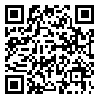Volume 18, Issue 74 (2021)
LIRE 2021, 18(74): 27-30 |
Back to browse issues page
Download citation:
BibTeX | RIS | EndNote | Medlars | ProCite | Reference Manager | RefWorks
Send citation to:



BibTeX | RIS | EndNote | Medlars | ProCite | Reference Manager | RefWorks
Send citation to:
Ghasemipour G. Theoretical explanation of the formation of genres and the relationship between genre and literary creativity. LIRE 2021; 18 (74) : 5
URL: http://lire.modares.ac.ir/article-41-60798-en.html
URL: http://lire.modares.ac.ir/article-41-60798-en.html
, gh.ghasemi@scu.ac.ir
Abstract: (2768 Views)
This article explains how genres are formed, and defines the relationship between genre and literary creativity. The subject of this article is not a historical or diachronic study of how genres are formed, but according to creation phenomenon, this study is a synchronic study of how literary authors deal with the phenomenon of genre. The modern conception of genre is based on the fact that genres are not merely tools for classifying and describing literary texts, but according to the new genre theory, genres are speech acts in repetitive situations, so they are tools for creativity; and without genres there is no any literary creation at all. In modern genre theory it is said that all texts belong to one or more genres. Issues that are considered in this article are: first, genres are related to writers, readers, texts, and social contexts. Contrary to the claims of the Romantics and some of their modern followers, the texts all belong to one or more genres. Genres, although obliging rules, provide opportunities for selection. Another issue is the stability and flexibility of genres, which is closely related to the phenomenon of literary creativity, because generic alterations are subject to literary defamiliarizations. The concluding point of this article is that literary creators do not create genres without background, but literary genres are the result of the alterations of speech acts into literary forms. Therefore, genre is not only a tool for describing and classifying texts, but also is a tool or a device for creativity. In fact, none of the literary works can escape from the genre rules. In addition, among literary genres, some are more flexible than others, and this flexibility provides an opportunity for innovation and creativity.
Article number: 5
Article Type: مقالات علمی پژوهشی |
Subject:
Literary Criticism
Received: 2021/02/3 | Accepted: 2021/07/16 | Published: 2021/12/22
Received: 2021/02/3 | Accepted: 2021/07/16 | Published: 2021/12/22
Send email to the article author
| Rights and permissions | |
 |
This work is licensed under a Creative Commons Attribution-NonCommercial 4.0 International License. |









